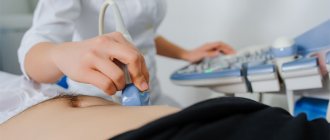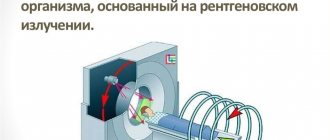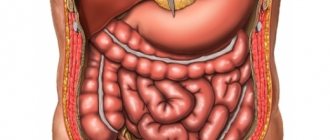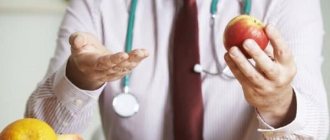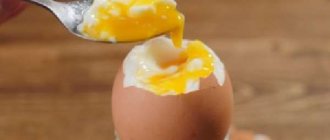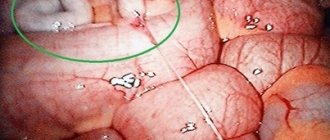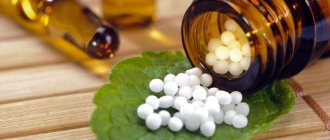Following a diet for adhesive bowel disease is an important stage of recovery. When prescribing it, the doctor takes into account the patient’s condition and the severity of the disease. Food should be healthy and tasty so that there is no desire to eat something from a limited list. When following the correct diet, a stable remission is observed, and the formation of exacerbations and attacks is reduced.
Briefly about the disease
Intestinal pathologies are often interrelated. Adhesions can appear after an infection of the abdominal cavity, appendicitis, various abdominal injuries, duodenal ulcers, and stomach.
In addition, the reason may be:
- surgical intervention;
- pregnancy, childbirth (caesarean section);
- heredity.
The disease occurs gradually, the walls of the peritoneum are closed by fibrous tissue with intestinal loops, adhesions occur quickly or slowly.
The patient suffers from the following symptoms:
- pain in the navel area, radiating to the side, increasing after physical exertion;
- bloating;
- nausea and vomiting are observed;
- intestinal disorder in the form of constipation, leading to prolapse of hemorrhoids;
- During the operation, there is noticeable discomfort in the area of the scar.
Intestinal obstruction is the most severe form of the disease. Due to the expansion of connective tissue, food cannot pass through the lumen. There is flatulence, which causes bloating, vomiting, severe acute pain, and there is no bowel movement.
If you do not visit a doctor in time, intestinal adhesions are dangerous due to their complications, which lead to surgery or, even worse, death.
Adhesive bowel disease: how is it manifested and treated?
Adhesive intestinal disease is an inflammatory-dystrophic process characterized by the formation of connective tissue constrictions (adhesions) between the loops of the small and large intestines. Adhesions interfere with proper motor-evacuation function of the intestines. The clinical picture is variable: from asymptomatic to intestinal obstruction.
Adhesions are fairly dense strands of connective tissue that are formed as a result of inflammation and swelling of the layers of the visceral and parietal peritoneum - tissue that covers the inside of all organs located in the abdominal cavity. Even with a local inflammatory process, the layers of the parietal and visceral peritoneum become swollen, fibrin threads fall out inside, which contribute to the gluing process. This is a kind of protective moment that helps limit the inflammatory reaction. These fibrin threads are subsequently transformed into dense connective tissue.
The causes of adhesive disease can be external and internal factors. It is the provoking factors that should be considered, since the influence of the same action goes unnoticed in one person, while in another it provokes the development of an adhesive process.
Among the possible causes of adhesive disease should be considered:
- all processes included in the concept of “acute abdomen” (appendicitis, cholecystitis, etc.);
- chronic inflammation of organs inside the abdominal cavity (appendicular infiltrate);
- in women – chronic inflammatory diseases of the organs inside the pelvis (salpingoophoritis, adnexitis, endometriosis);
- traumatic injuries to the abdomen (single or multiple blows to the abdomen during sports, in a fight);
- any abdominal surgery.
Genetic predisposition is one of the fundamental aspects of adhesive disease. The likelihood of an adhesive process also increases if relatives in the direct line have had cases of this disease.
The clinical symptoms of adhesive disease are determined by the severity and prevalence of the pathological process: 2-3 adhesions between the loops of the large and small intestines may not be felt at all, while with multiple pathologies there are certain symptoms.
In addition, adhesive disease, according to the classification, is divided into chronic, acute and intermittent (occurring periodically). Accordingly, in the acute form of this disease, clinical signs appear and increase quickly, over a short period of time; and in chronic cases, it appears slowly and accompanies a person for many years.
Among the possible clinical signs of adhesive disease are:
- pain without clear localization;
- the intensity of pain varies from moderate to severe, pain increases with increased peristalsis (after eating);
- nausea (rare);
- vomiting and regurgitation (especially after eating large amounts of food);
- flatulence and bloating.
If adhesive disease is complicated by intestinal obstruction, then classic clinical symptoms are observed:
- severe abdominal pain of a spastic nature; subsidence of pain indicates necrosis of intestinal areas;
- repeated episodes of vomiting even after drinking water;
- the stomach becomes swollen and asymmetrical;
- bloating is combined with the absence of gas discharge;
- stool is absent or very scanty;
- The general condition deteriorates quite quickly: a high temperature with chills and severe weakness appear.
The clinical symptoms of acute and chronic adhesive disease are similar to many other diseases of the abdominal cavity, so you cannot do without the help of a specialist.
What to consider in nutrition
At the first stage of development of adhesions, where there is still little connective tissue, it is necessary to stimulate the digestive process in every possible way. The stronger the muscles, the lower the likelihood of an increase in adhesions. It is important to eat foods that contain fiber, which activates digestion. A menu that will be dominated by fruits, fresh vegetables, various cereals, and wholemeal products will help avoid constipation and prevent the appearance of excess body weight.
When the disease has become chronic, it is important to prevent attacks. During this time, you should follow a semi-liquid diet for adhesions. Be sure to eliminate alcoholic beverages and smoking from your lifestyle. Ethyl alcohol in varying quantities disturbs the walls of the organ, reduces liver function, and provokes the accumulation of toxic substances. Nicotine impairs the functioning of blood vessels and the stimulation of muscle tissue, and damages the proper absorption of nutritional components.
Dietary recommendations
For a speedy recovery, you must follow the general rules:
- eat food that will help cope with the pathology, and will not increase symptoms. Eat a little at a time, meals with a break of 3-4 hours, you can’t eat before bed, the last meal is 2 hours before;
- drink a lot of water, at least 2 liters per day. Jelly, compotes, fruit drinks with no sugar will have a beneficial effect on the body;
- avoid quick snacks;
- overeating or fasting worsens the situation; you need to eat food at the same time;
- eat warm food. Hot or cold food excites the mucous membrane and often causes gastrointestinal disorders;
- food should be boiled, baked or steamed;
- At first, grind the food or use a blender, then chew it thoroughly;
- the diet should be balanced and healthy.
After the condition improves, you cannot immediately stop the diet for intestinal adhesions. It is important to maintain a special diet for some time after your health has returned to normal.
Symptoms
The clinical symptoms of adhesive disease are determined by the severity and prevalence of the pathological process: 2-3 adhesions between the loops of the large and small intestines may not be felt at all, while with multiple pathologies there are certain symptoms.
In addition, adhesive disease, according to the classification, is divided into chronic, acute and intermittent (occurring periodically). Accordingly, in the acute form of this disease, clinical signs appear and increase quickly, over a short period of time; and in chronic cases, it appears slowly and accompanies a person for many years.
Among the possible clinical signs of adhesive disease are:
- pain without clear localization;
- the intensity of pain varies from moderate to severe, pain increases with increased peristalsis (after eating);
- nausea (rare);
- vomiting and regurgitation (especially after eating large amounts of food);
- flatulence and bloating.
If adhesive disease is complicated by intestinal obstruction, then classic clinical symptoms are observed:
- severe abdominal pain of a spastic nature; subsidence of pain indicates necrosis of intestinal areas;
- repeated episodes of vomiting even after drinking water;
- the stomach becomes swollen and asymmetrical;
- bloating is combined with the absence of gas discharge;
- stool is absent or very scanty;
- The general condition deteriorates quite quickly: a high temperature with chills and severe weakness appear.
Authorized Products
Dietary nutrition for intestinal adhesions involves the use of carbohydrates, easily digestible proteins, and plant fiber. Include all permitted foods in your diet, trying to make the menu as varied as possible. A person consumes food in small doses, which facilitates digestion and allows all the nutrients received to be absorbed.
Recommended dishes are:
- vegetable soups, or cooked in chicken broth;
- dietary meat of rabbit, beef, nutria;
- lean fish;
- porridge cooked in water, except rice cereal;
- biscuits, yesterday's bread;
- butter and vegetable fats;
- marmalade, pastille, marshmallows;
- low-fat dairy products (kefir, fermented baked milk, cottage cheese, homemade yogurt);
- compotes, berry jellies;
- scrambled eggs;
- fresh fruits, vegetables (cabbage, zucchini, tomatoes);
- decoctions of medicinal herbs, green tea.
Instead of store-bought sweets, which contain a lot of preservatives, sugar, and vegetable fats, use dried fruits, walnuts, and fruit puree. These products are rich in vitamins, are quite easy to digest, and do not irritate the intestinal mucosa.
It is imperative to eat boiled vegetables for treatment and prevention. Salads, pumpkin, broccoli, beans, eggplants, tomatoes, and cucumbers are very healthy. They are prepared in the form of stews, pancakes, and first courses. The amount of salt should be reduced, and the addition of dill, rosemary, parsley and other spices to food should be increased.
Planning meals at home
Diet is one of the main methods of treatment and prevention of such a disease as intestinal adhesive disease. Of course, it cannot be avoided in cases where surgical intervention is required, but it is prescribed to all patients during the rehabilitation period. Let's look at what is allowed to be included in the diet, what food should be abandoned when the patient has already been discharged from the hospital to go home.
If a diet is indicated for intestinal adhesions, you should not eat foods such as:
- Fresh baked goods.
- Smoked meats.
- Fatty meat, fish.
- Canned food.
- Radish.
- Pickles, marinades.
- Spicy seasonings.
- Legumes.
- White cabbage.
- Soy.
- Milk.
- Ice cream.
- Sunflower seeds.
- Chips, crackers.
- Sausages.
- Onions, raw or pickled.
- Radishes, turnips.
- Mushrooms.
- Nuts.
- Peanut.
- Grape.
- Pears.
- Barley porridge.
- Hard boiled eggs.
- Cucumbers.
- Zucchini.
- Black bread.
- Semi-finished products.
- Fast food.
Do not eat vegetables and fruits raw; if the doctor allows you to consume them in small quantities, you need to peel the selected fruit. Sometimes flatulence can be associated with seemingly harmless products - for example, kefir or cottage cheese. Therefore, it is always worth focusing on the individual needs of the body, and not just on the general characteristics of the diet.
You can eat
The dietary menu in the presence of intestinal adhesions may include the following types of food:
- lean meat, fish;
- low-fat broths;
- heat-treated fruits and vegetables;
- eggs - in the form of a steam omelet or soft-boiled;
- porridge with water (except barley);
- stale bread;
- low-fat fermented milk products;
- butter – limited;
- dried fruits - according to tolerance;
- biscuits;
- vegetable oil – limited.
You need to cook by baking, steaming, stewing, boiling. You should not fry vegetables for soup or meat dishes, or add a large amount of oil. Salads made from fresh plant products are consumed with caution or are completely eliminated from the diet.
Beverages
In order not to suffer from abdominal pain due to flatulence and not to increase the risk of complications due to adhesions in the intestines, you should not drink:
- Milk.
- Carbonated drinks.
- Freshly squeezed and packaged juices.
- Sweet cocktails.
Any alcohol is strictly prohibited - for people during the rehabilitation period after abdominal surgery, it becomes a poison and has a detrimental effect on the functions of the gastrointestinal tract and liver. Frequent consumption of mineral water is also undesirable - its composition can be different and in acute situations with intestinal diseases, not every option is useful.
Allowed to drink:
- boiled water;
- compote;
- jelly;
- berry and herbal decoctions - according to tolerance;
- kefir;
- fermented baked milk (with low fat content);
- black or green tea without additives.
Drink at least 1.5-2 liters of water per day. This is especially important when consuming large amounts of fiber to prevent constipation.
Forbidden food
Eliminate foods from your diet that irritate the intestinal walls and cause pain. It is forbidden to use drinks, food with an increased content of seasonings, salt, glucose, hot spices.
For any degree of adhesive pathology, you should completely avoid:
- fried, fatty foods;
- mushrooms, radishes, radishes;
- coffee and strong brewed tea;
- canned food, sausages, mayonnaise;
- semi-finished products, fast foods;
- store-bought sweets;
- sauerkraut, fresh cabbage, plums, melon, grapes;
- exclude rich broths and soups;
- fatty meat;
- legumes (peas, lentils);
- whole milk;
- kvass, soda, alcohol;
- black bread, yeast products.
At the time of exacerbation of adhesive disease, food containing plant fiber, as well as foods that provoke bloating and flatulence, are excluded from the diet. They lead to acute pain syndrome, which is not easy to eliminate.
If the disease worsens, it is advisable not to eat industrially produced food, since their composition is difficult to control. Food should be homemade and fresh.
Fully or partially limited products
- You should not eat rye bread, yeast and puff pastries. Chocolate, fatty cookies, products with cream, cakes and pastries, which increase constipation, are not allowed.
- Jelly made from bird cherry, quince, blueberry, pear, dogwood, strong tea, cocoa, coffee, as they contain tannins.
- Difficult to digest fatty meats, poultry and fish, canned food, fried foods, smoked foods, hard-boiled eggs are excluded - all this causes constipation.
- Dishes with a viscous consistency (mucoid soups, mashed potatoes, jelly, jelly, pureed porridge), as they slow down intestinal motility.
- Legumes, grapes, pears, cherries, white cabbage (fresh and pickled cabbage equally cause bloating), corn (fresh and canned), fresh onions, radishes, turnips.
- Hot sauces, horseradish, adjika, mustard, mushrooms, rice, noodles, sago, semolina, noodles should be limited.
- Kvass, carbonated drinks.
Diet after surgery
In case of intense problems with adhesions and deterioration of the patient’s well-being, surgical intervention will be required. In the postoperative period, a person needs special dietary nutrition, which gradually improves the functioning of the gastrointestinal tract.
Much depends on the form of intervention:
- Laparotomy is the least traumatic and does not require long-term rehabilitation;
- but classic resection, where sutures are used, requires a strict diet after surgery for 2-3 months.
At the very beginning (the first 2 days) it is allowed to eat liquid food. The patient takes light chicken broth, vegetable decoctions rich in protein, microelements, and calcium. Do not add salt to dishes; you can eat a little chopped boiled vegetables.
The diet is replenished with water-based porridges and vegetable purees. By day 5-6 you can add steamed cutlets. A week later: unpuréed soups, fermented milk products, boiled fish, vegetable stew.
The patient should eat this way for 2-3 weeks, after which the diet expands.
General features of the postoperative diet
The menu is selected by the patient himself, the doctor only advises and recommends certain food products for consumption. The diet should be followed both in the hospital and after discharge for 1-2 months until peristalsis is completely restored. It is necessary to return to your usual diet gradually, without sudden transitions.
Basic principles of postoperative diet:
- Hunger during the first and second days after surgery. Parenteral nutrition (intravenous administration of glucose and protein solutions).
- Extremely gentle food for 1-2 weeks after surgery, when the patient is still in the hospital: porridge, pureed soups, pureed vegetable and fruit purees, compotes, fruit drinks and teas.
- After discharge from the hospital, prepare food yourself by steaming or boiling it in salted water, followed by grinding it into a paste-like consistency.
- Compliance with the diet for another 1 month after discharge.
- Exclusion of fatty, salty, smoked, fried and irritating foods, as well as spicy, hot, bitter and sour.
- Avoiding sweet foods and foods that cause increased gas formation and bloating.
- Eating at the same time of day.
- At least 5-6 meals per day.
- All dishes are served warm.
The main principle of the diet is to restore normal stools, normalize peristalsis and relieve painful symptoms. This makes the patient’s condition easier after surgery and relieves stress on the digestive tract. As a result, tissue regeneration proceeds faster, and the recovery period does not take so much time.
Products that do not irritate the intestines, are easily digestible and digestible are recommended for consumption. It is better if they undergo heat treatment before use.
After surgery, the following are allowed for use:
- Boiled cereals and grain products.
- Boiled vegetables in the form of puree.
- Boiled and baked fruits in the form of puree.
- Fermented milk products.
- Meat broths without adding spices.
- Meat purees (at 1-2 weeks), then pieces of lean meat.
- Dried black bread and crackers.
- Berry jellies, jelly.
- Boiled and soft-boiled eggs.
- Mineral water.
- Vegetable juice.
- Black or green tea.
- Fruit drinks, compotes, decoctions.
Irritating (spicy, bitter, sour, sweet) and hot foods should not be eaten after surgery. Products that cause increased gas formation and fermentation, as well as difficult to digest foods, are excluded from the diet.
After surgery, the following are prohibited for use:
- Sour fruits and berries.
- Preparations for the winter - pickles, smoked meats, marinades.
- Canned food.
- Sweets – candies, cookies, chocolate, etc.
- Mushrooms.
- White and fresh bread, baked goods.
- Nuts.
- Cold drinks.
- Legumes.
- Alcohol.
Important! It is recommended to avoid these foods for at least three weeks after surgery. It is advisable to maintain such a diet for 2 months.
Nutrition alone cannot defeat cancer. The diet is prescribed after surgery, when part of the intestine has already been removed. The menu is selected in such a way as to normalize the patient's stool, while the energy value of the dishes must fully satisfy the needs of the patients.
The menu includes large quantities of fruits and vegetables, broths, and cereal porridges. Meat consumption is limited (no more than 100 g per day of lean meat). The main source of protein is seafood, which is digested more quickly and contains a lot of microelements.
Food is served warm. Every day they monitor the nature of the stool and the amount of liquid drunk (at least 2-2.5 liters per day).
Adhesive obstruction is a very common disease of the digestive tract. After surgery for intestinal adhesions, the patient must follow a special diet.
The menu includes exclusively mushy and puree-like foods. All products are grated and ground in a blender to puree. It is not recommended to eat rough food for 1-2 weeks after surgery.
At this time, you need to drink a lot of liquid: teas, rosehip or herbal decoctions, compotes, fruit drinks. The menu includes jelly and berry jellies as dessert. During the diet, stool passage is also monitored. There should be at least 6-8 meals in small portions per day.
If there is an intestinal obstruction, a large portion of the small intestine is removed. This is dangerous by the development of malabsorption syndrome with subsequent transition to asthenic syndrome. Therefore, such patients must follow the diet for life.
The menu includes easily digestible foods; difficult to digest foods are excluded, since they do not have time to be digested by the intestines. Vegetables, broths and soups, cereals and purees are allowed in large quantities. The patient needs to independently monitor the condition of the stool and the characteristics of the body’s reaction to certain foods, since the digestibility of food varies from person to person.
A stoma is the removal of the blind end of the intestine to the anterior surface of the abdominal wall. This is necessary in the first months after surgery for intestinal cancer or intestinal obstruction. In a word, any operation for bowel resection, as a rule, ends with the imposition of a stoma.
This is a temporary measure, however, the stoma causes a lot of inconvenience to the patient. You can learn to live with an open intestinal stoma if you follow the basic principles of nutrition.
The menu is mainly aimed at facilitating the act of defecation, while the patient should not have loose or overly hard stools. The patient is recommended to keep a food diary, where he writes down everything he ate the day before and the digestive reaction to the food eaten. Indicate symptoms (flatulence, pain, cramps), the nature of the stool (liquid, hard, mushy) and the amount of food eaten.
Important! Nutrition for intestinal stoma includes a variety of vegetables, fruits, soups, dairy products, and meat. By keeping a food diary, the patient himself adjusts the diet, depending on the body’s response to the dish. For constipation, the menu includes beets, prunes, and plums. For diarrhea - grain porridge.
Much depends on the form of intervention:
- Laparotomy is the least traumatic and does not require long-term rehabilitation;
- but classic resection, where sutures are used, requires a strict diet after surgery for 2-3 months.
At the very beginning (the first 2 days) it is allowed to eat liquid food. The patient takes light chicken broth, vegetable decoctions rich in protein, microelements, and calcium. Do not add salt to dishes; you can eat a little chopped boiled vegetables.
The diet is replenished with water-based porridges and vegetable purees. By day 5-6 you can add steamed cutlets. A week later: unpuréed soups, fermented milk products, boiled fish, vegetable stew.
The patient should eat this way for 2-3 weeks, after which the diet expands.
A proper diet allows you to achieve various goals that help improve the patient’s well-being:
- Reduce stress on the digestive system.
- Maintain functional intestinal activity.
- Prevent constipation and establish regular bowel movements.
- Reduce the risk of obstruction and other complications.
The diet helps to avoid exacerbations (in particular, if abdominal surgery was performed due to some kind of disease of the digestive system), eliminate increased gas formation.
The fight against flatulence for a person who has adhesions is very important, because the intestines become overstretched and there is a risk of disruption of its functional activity. Finally, a gentle diet makes it possible for high-quality rehabilitation of the gastrointestinal tract, because a person undergoes serious stress during surgery and all organs need time to recover.
Sample menu
With intestinal adhesions, a diet can be tasty and healthy. The main rule is to use only high-quality products. To prepare dishes, a steamer, oven, or multicooker are used. A small amount of oil is added to prepared food.
Approximate menu for intestinal adhesions:
- Monday:
- breakfast: steam omelette;
- lunch: fish soup from low-fat seafood;
- afternoon snack: carrots and applesauce;
- dinner: stew with meat.
- Tuesday:
- breakfast: chicken cutlet, zucchini puree;
- lunch: vegetable soup, meatballs;
- afternoon snack: cottage cheese with added fruit;
- dinner: stewed fish, mashed potatoes.
- Wednesday:
- breakfast: egg, oatmeal;
- lunch: broth with meat, carrot puree;
- afternoon snack: biscuits, fruit jelly;
- dinner: buckwheat, fish cutlet.
- Thursday:
- breakfast: casserole, tea;
- lunch: chicken noodle soup;
- afternoon snack: fruit salad;
- dinner: meatballs or cutlets, mashed potatoes.
- Friday:
- breakfast: baked apples, pumpkin puree;
- lunch: rice soup with beef;
- afternoon snack: applesauce;
- dinner: steam cutlet, oatmeal.
- Saturday:
- breakfast: rice porridge, tea;
- lunch: baked fish, chicken soup;
- afternoon snack: crackers from white bread, jelly;
- dinner: stewed meat, vegetables.
- Sunday:
- breakfast: buckwheat, egg;
- lunch: meat broth, meatballs;
- afternoon snack: a glass of kefir, biscuits;
- dinner: vegetables with rice.
Prevention
It is possible to prevent the occurrence of adhesive disease. We must try to avoid inflammation in the intestines. It is important to take high-quality products and wash your hands after going outside and using the toilet, as infections can be the beginning of the appearance of adhesions.
Regular peritoneal exercises help prevent the development of illnesses that arise due to lack of mobility. It is important to treat constipation in a timely manner; constant difficulties with emptying indicate dangerous internal diseases of the gastrointestinal tract.
Meals for adhesions are easy to prepare at home. By following the recommended diet, it is possible to reduce the process of connective tissue or prevent it altogether. By following the regimen, a person will achieve improved health, no exacerbations, and eliminate the inflammatory process in the intestines. To achieve this, you need to pay due attention to your health.
We recommend: Treatment of intestinal dysbiosis in adults after antibiotics
